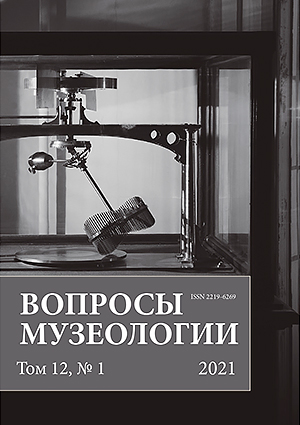Porcelain interior plastic of the 1950s in museums and private collections in China
DOI:
https://doi.org/10.21638/spbu27.2021.106Abstract
the two decades since the establishment of the people’s Republic of China, the challenges facing porcelain production have changed significantly. Porcelain production is one of the most important and oldest traditions in China. In the 1950s, porcelain craftsmen became involved in the creation of new forms of interior plastics. Many of the pieces they created are now part of museum collections and represent the history of the development of Chinese interior porcelain. Using the example of three museums and three reference monuments, the article examines the key trends in the development of porcelain art and stylistic changes that occurred during this period. The following museums have been selected as examples to showcase the specifics of Chinese porcelain art from this period: the China Ceramic and Porcelain Museum located in Jingdezhen City, which is the country’s first major art museum specializing in ceramics; the Chinese Fine Arts Museum in Beijing, which specializes in collecting, researching and displaying works of Chinese artists of modern and contemporary eras; and the Guangdong Folk Art Museum, which specializes in collecting, researching and displaying Chinese folk art. All of these museums are engaged in collecting porcelain, including interior porcelain plastics from the mid-20th century. In the collections of the aforementioned museums, three works were selected for analysis. These are three paired compositions created in the second half of the 1950s: the sculpture “An Old Man and a Child with a Peach” by Zeng Longsheng, “Good Aunt from the Commune” by Zhou Guozhen and “Fifteen coins. The rat case” by Lin Hongxi. These porcelain compositions reveal close relations with Chinese national culture and not only reflect various scenes, but are also aimed at expanding the role of porcelain in decorating residential interiors.
Keywords:
the history of porcelain, porcelain collection, porcelain plastics, interior plastics, Chinese porcelain, museums’ collections
Downloads
References
Литература
References
Downloads
Published
How to Cite
Issue
Section
License
Articles of "The Issues of Museology" are open access distributed under the terms of the License Agreement with Saint Petersburg State University, which permits to the authors unrestricted distribution and self-archiving free of charge.




